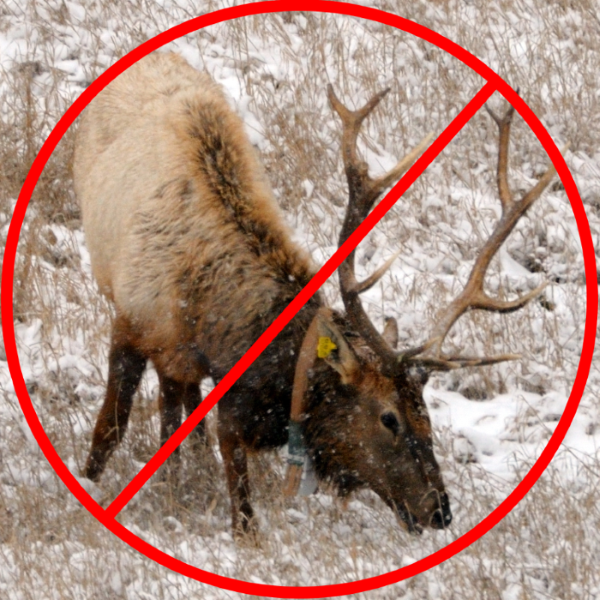Anatomy & Shot Placement
Understanding the basic anatomy of an elk will help you make appropriate equipment and shot placement choices prior to your hunt.
Vital Organs
Let’s first define the “vital organs” and the importance of choosing the vitals as an ethical shot. The most vital organs of elk and all game animals are the heart and lungs. A proper shot through the heart and/or lungs will offer the quickest kill, making it the most humane for the animal. These organs offer the best opportunity for a kill for firearm and archery hunters.
A double lung shot offers a hunter the best opportunity to take down an elk quickly. The lungs provide the largest target and by collapsing both lungs, the animal will be unable to travel a far distance. Though a heart shot will do the job as well, it presents a much smaller target and makes the margin of error smaller for the hunter. The heart is tucked behind the front shoulder towards the bottom of the body cavity. Miss low and you may miss all together, miss forward or high and you may hit shoulder blade (bone) losing necessary penetration.
Envision: You have an elk at 30 yards, whether you realize it or not your body will most likely release adrenaline and therefore you should expect heavier breathing, shaking and even enough excitement to make poor decisions. Would you rather have an inch margin of error or 4-5 inches?
 Image Source: Wayne Trimm
Image Source: Wayne Trimm
So what tissue, muscle and bones do your arrows and bullets pass through to reach the vital organs?
By now, you have an understanding of just how BIG elk really are. For an animal of this size to support its weight, its “frame” or skeletal system must be sturdy and strong and must be supported by the necessary muscles and tissues for movement.
The scapula of an elk can have a thickness ranging from ¼ inch to 2 ½ inches! Add to that the thickness of the skin/hide, heavy muscles and tendons. There is a lot of matter your arrow or bullet must travel through to even REACH the vitals—and it still must PENETRATE them to make the kill!
Let’s take a closer look at elk anatomy from different angles. A proper shot-placement opportunity makes for the most humane kill for the animal, and an easier recovery for you.
Only two shot angles offer shot-placement opportunities to make the ideal double lung or heart shot for both archery and firearm hunters. The hunter’s ability to wait for one of these two shots will increase the chance of a successful harvest and decrease the chance of injury and non-recovery of the animal.
Broadside
This is the ideal shot for most archery and firearm hunters. It provides the hunters with the largest target of the vital area behind the shoulder blade (scapula). Properly placed shots will have little bone to pass through, enabling more penetration to the vitals. This shot angle also provides the best opportunity to make a double-lung/heart shot and offers a quick humane kill.
 Image Source: elkhunting.com
Image Source: elkhunting.com
Quartering Away
This shot offers another ideal shot-placement opportunity for hunters. The angle of the elk away from you will affect your shot placement for the proper entry and exit holes. An extreme quartering away shot will offer little room for error as the margin between the back hip and front shoulder shrinks as the angle of the elk away from the hunter increases. A slight quartering away angle will open up the vital area to the hunter and provide ample opportunity for a deep penetrating shot. The ability of a hunter to envision the arrow or bullet path through the elk is of high priority to successfully make a double lung shot.
 Image Source: Joe Lacefield
Image Source: Joe Lacefield
While elk will present hunters with other less-ideal shot opportunities such as a quartering toward shot, these shots are not recommended as there is a high chance of hitting bone, resulting in little to no penetration of the vitals. The ability for a hunter to successfully make a double-lung shot decreases and the margin of error becomes much smaller as well. Especially when taken by bowhunters, these shots present the most likelihood of injury to the animal causing potential infection and death over an extended period of time. Many hunters use calls to draw the bulls to get close. That presents a problem because the bulls usually walk straight towards the noise and don’t present a broadside shot. Caller placement then becomes important.
 Image Source: Joe Lacefield
Image Source: Joe Lacefield